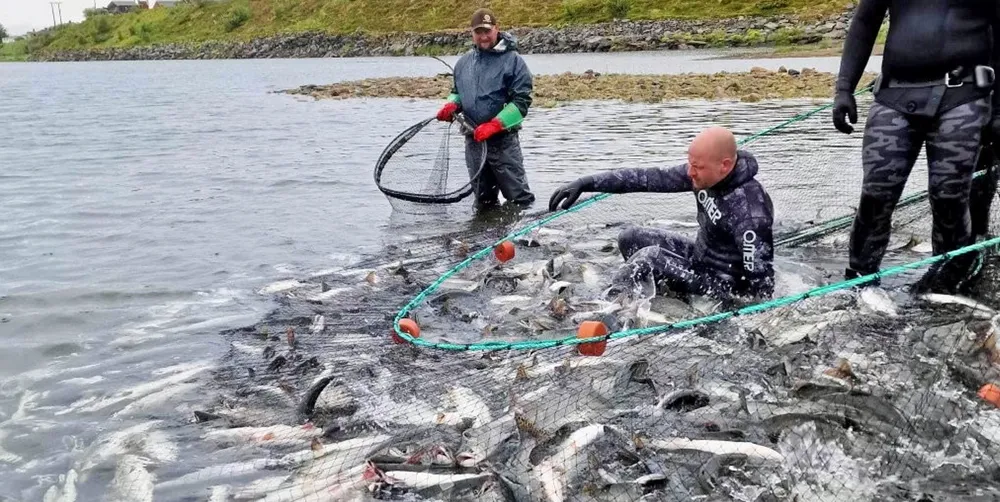Invasion? Unwanted pink salmon popping up in new areas in greater abundance as fish navigate warming oceans
Pink salmon are 'increasing in abundance in the northern Pacific Ocean, are accessing the Arctic Ocean, and have been rapidly expanding across the eastern Atlantic Ocean in recent years.'

Pink salmon appear to be beneficiaries of climate change as ocean temperatures warm globally.
A global report published earlier this year by Canada's North Pacific Anadromous Fish Commission (NPAFC) reviewing pink salmon in the Pacific, Arctic, and Atlantic Oceans shows the fish, already the most widely distributed Pacific salmon species in the northern hemisphere, has expanded even in recent years.
The report was put together as part of a Northern Hemisphere Pink Salmon Expert Group with input from several scientific agencies, including NOAA, the Alaska Department of Fish and Game (ADF&G), Fisheries and Oceans Canada (DFO), Inland Fisheries Ireland, Norway's Institute of Marine Research and Fisheries Management Scotland, Edinburgh, UK, among others.
"In the Atlantic, they have likely produced self-sustaining populations in northern Norway, Scotland, and Iceland and have been observed as far south as France."
Using various methods, over 100,000 pink salmon were estimated to have been removed from rivers across Norway in 2021, the report said. So far this year, more than 230,000 pink salmon have been captured and killed in Norwegian rivers, according to the Norwegian Environment Agency's overview.
While pink salmon have not developed a significant population, "vagrants have also been observed in eastern Canada from Nunavut to Newfoundland," the report said.
Pink salmon may stray at higher rates than other species of Pacific salmon and also have a homing behavior that is "highly plastic," according to the report, which could account for some of its colonizing behavior.
"Pink salmon are also observed in the Arctic, with rapidly increasing catches from introduced and now self-sustaining populations in northwestern Russia and increasing trends in distribution and occurrence of presumed vagrants in the North American Arctic," the report said.
The fish appear to be benefitting from ocean warming, especially in northern regions, the report said. Ocean warming has contributed to recent range expansions in Arctic waters of North America as well as Asia and Europe where hatchery releases in Russian waters allowed pink salmon to become initially established.
"Warming temperatures may be fueling increased pink salmon production at their northern distributional extent, whereas those in the south are struggling with the cumulative impacts of environmental change," the report said.
The lack of sea ice to contend with as well as evidence increasingly showing warmer sea temperatures benefit juvenile pink salmon's early marine growth appear to be aiding the species as it looks for new areas to spawn.
"Pink salmon are clearly on the move in the northern hemisphere," the global report emphasized. "Although they represent one species among a global redistribution of life, they also represent an opportunity to better understand broad-scale biodiversity change across our connected ocean."
(Copyright)